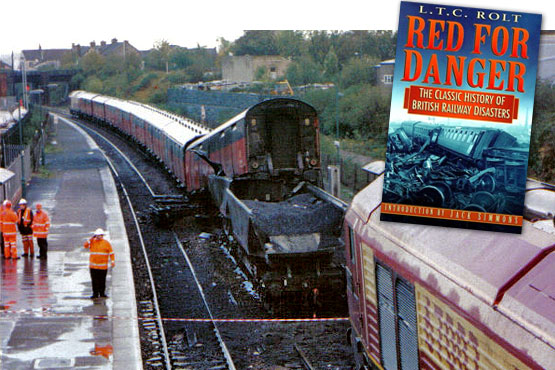|
‘Death by a thousand cuts’: a slow death by the torture of many small wounds, none lethal in itself but fatal in their cumulative effect. This phrase and its associated definition seem to perfectly reflect Network Rail’s latest misconceived cost-cutting exercise involving the likely loss of around 1,400 jobs.
Today’s railway enjoys a comparatively good safety record largely as a result of it learning the lessons from appalling episodes in its history. If you read L T C Rolt’s 1955 book ‘Red for Danger’ and the report into the Clapham disaster, you will begin to understand why many of the standards built into the system were first developed and how they help to safeguard the travelling public and our workforce.
 |
Safety standards have developed through the learning of lessons from accidents such as this one at Lawrence Hill Station in November 2000.
Photo: Floyd Nello |
Over the years, each accident and incident has been subjected to intensive scrutiny, the reasons investigated, conclusions drawn and recommendations made; in the main, these have then been acted upon. Improvements in equipment design are implemented along with the standardisation of testing, inspection and adjustment. All this requires well-trained staff working all hours of the day and night, sometimes in dreadful weather conditions.
All equipment exposed to the elements must work first time, every time in rain, snow and ice, or scorching heat. It’s not there for its own sake. We must remember that the sole purpose of our infrastructure is to safely carry trains full of people, sometimes at very high speeds, or freight services containing the goods we’ll buy in the shops tomorrow. It bears heavy vehicles whilst the staff who look after it bear a heavy burden of responsibility.
So what message does Network Rail’s proposed manpower cuts send out to the train operators and the travelling public?
Although there are some good examples today, welfare provisions for staff within the industry used to be of a more consistently high standard. ‘Green card posts’ were available - these were jobs for those who had sustained some kind of injury or disability, often work-related; there were canteens and BRSA clubs with sports facilities; personnel officers worked to everyone’s advantage; the railway bank was open to all; good quality training was on offer, focussed on practical skills; the PTR&R (promotion transfer redundancy and resettlement) arrangements were established and there was a sound professional approach to infrastructure maintenance.
You should get hold of a copy of the PTR&R agreements. Read them and, if you don’t understand them, get your union to run training sessions. They are your main form of employment protection and, no matter what kind of restructuring or reorganisation management wishes to impose, it must always act within the boundaries of these agreements.
Many of those occupying management posts within Network Rail are living proof that care in the community is not working. They believe that only the future is certain; it’s the past that’s unpredictable. They decimate tried and safety-tested standards, and attempt to replace them with new ones that seem to have been evaluated using the Duckworth-Lewis method.
|
| They decimate tried and safety-tested standards... |
|
Progress is a wonderful thing and we shouldn’t stand in the way of it. We must though fight any erosion of good practice driven only by the desire to cut costs. If better practices are now available then Network Rail should put its evidence on the table for us all to scrutinise.
Story from Jungle Ron, added 1st December 2009

|